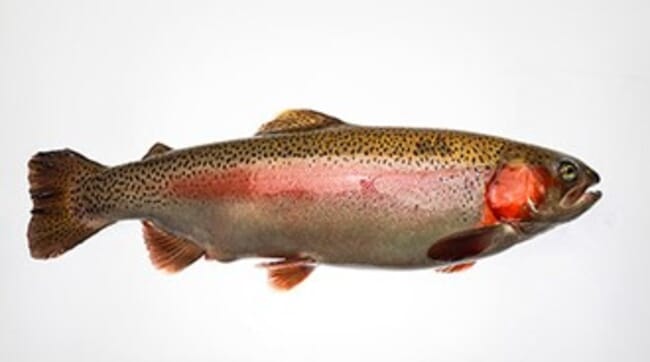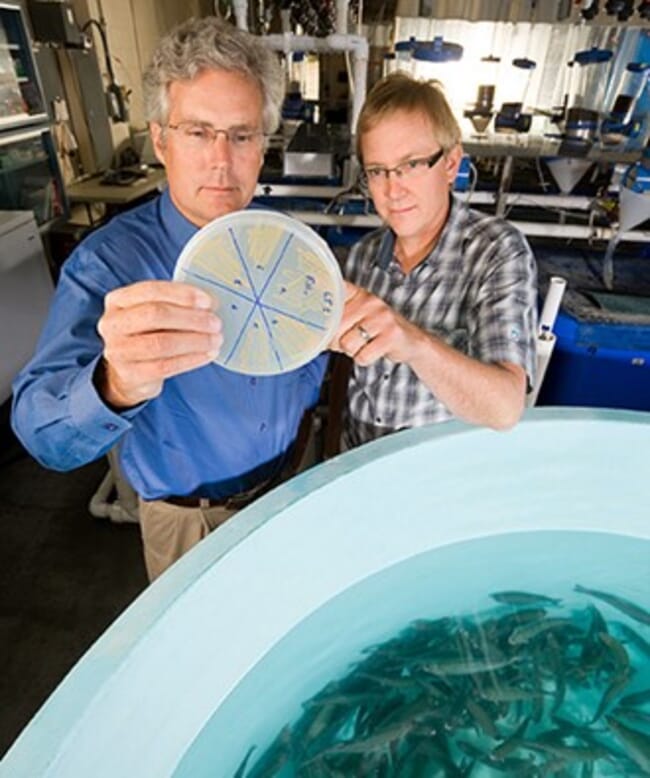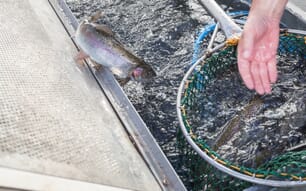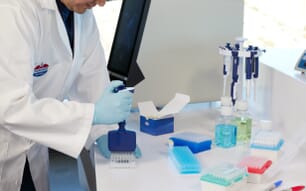
,Pictured here is a 2-year-old female from the line © Steve Ausmus
The research was led by Dr Tim Leeds, who’s based at the National Center for Cool and Cold Water Aquaculture (NCCCWA) in Leetown, West Virginia.
They accomplished this feat by analysing genetic markers – groups of genes they capture using breakthrough technology that has become vastly more affordable in recent years, explained Kathryn Markham, from ARS Office of Communications. One key tool is the SNP chip (referred to as a “snip chip”), a kind of DNA micro-array – essentially a tiny slide printed with information about an organism’s genetic sequence.
As a result, researchers have increased the sophistication of their efforts, improving more traits more quickly than ever before. Originally, they had just focused on raising ever-larger fish.
“We made very consistent improvement, generation over generation,” Leeds explained. “But improving growth performance is a pretty straightforward trait to work on, and industry can do that themselves.”
Now, with the ability to peer into the genome of the fish, researchers can investigate traits at a much deeper level – everything from how efficiently the fish feed to their resistance to pathogens. Near the top of their list: resistance to bacterial cold water disease, a leading killer of farm-raised trout.

ARS molecular biologist Greg Wiens (left) and ARS microbiologist Tim Welch examine a culture of Flavobacterium psychrophilum, a bacterial pathogen of rainbow trout © Steve Ausmus
With traditional breeding methods, it had been difficult to address the illness.
“How do you phenotype? That’s always the challenge,” Leeds explained, referring to the process of identifying the physical manifestations of genes in an organism.
“Getting into a trait like disease resistance is hard to do,” he said. With traditional breeding “we found that this trait was heritable” – meaning that researchers could improve it by selecting and propagating families that are most resistant. But with genomic technologies, the team can more accurately identify individual fish, not just families, that are more resistant, leading to more rapid improvement of the trait in the population. The wealth of genomic information also allows researchers to better understand actual genes and biological mechanisms that affect disease resistance. Leeds explained that disease resistance is important because antibiotics have been the main tool against disease, and by developing fish that are naturally disease-resistant, it’s possible to limit the amount of antibiotics that are used.
Leeds believes these changes will have a large impact on the aquaculture industry.
“Where this is going is, it’s not really the fish that we produce, it’s the technologies and knowledge that we produce [that matter to producers], and I say that because of the advent of genomic selection,” he said. “Our scientists developed a 57,000 [loci] snip chip for rainbow trout. It’s kind of like the 23andMe that we use in humans, just for rainbow trout. That’s a very modern and effective way to improve populations.”
In addition, because fish produce so many offspring at once, any improved trait can be spread into new populations very quickly. Leeds explained that because of the large family size and very high fecundity of fish, it is easy to amplify preferred traits.
“If you have a fish that can have 5,000 offspring vs a litter of 12 pigs or a single calf, think about how that can expedite the amplification of truly elite genetics,” he said. “Most people think fish, well that’s worth a couple of dollars in the marketplace. But when you think about the fecundity of these fish, it’s worth investing in them to find the truly elite seedstock that can quickly be amplified and really impact the industry.”



